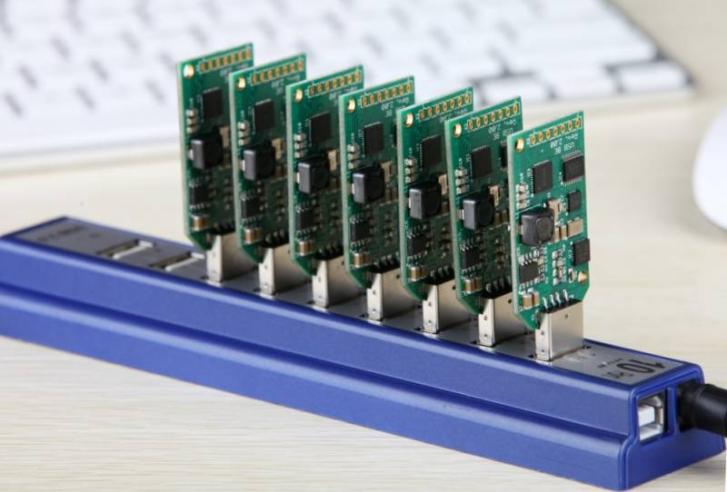So, you want to become a miner… Always dreamed of spending your days with a helmet on your head, excavating the depths of the earth with a pickaxe? Then go look for other guide, because this one is for the rookies who want to become Bitcoin miners, but first need to understand the basics of this fine art.
The first thing to acknowledge: not every Bitcoin user is a miner, these are two different things. Second, you must choose the kind of miner you want to be: the kind that does it for fun and is not looking for profit, but for a different experience, or the one that has the time to do it in an effective way and win money from it. Ready? Let’s go!
1. The basics about Bitcoin mining
Like we already said it, there’s no pickaxe and helmet in this kind of mining. So, you need to take a look at this basic information to understand what you are getting into. Imagine you already have everything that you need, software and hardware included. Once you start the mining process, your computer will run a cryptographic hashing function (take a look at an example here), based on a block header. This means that when you are generating, you are also constantly hashing the block header, which is occasionally updated as you are working on it (again, read this to better understand the definition).
Each new hash will be identified by the mining software with a different number – called nonce – and become a random element of the block header. After this process, each hashing function will yield a hash.
A hash is a long number, something like this: 93ef6f358fbb998c60802496863052290d4c63735b7fe5bdaac821de96a53a9a
Next, there’s the difficulty target level. To create a valid block, each miner has to find a hash that is below the corresponding difficulty target. This is a pretty technical part, but let us just give you an example:
If the difficulty target is 1000000000000000000000000000000000000000000000000000000000000000, any number that starts with a zero would be located below the target, like 0787a6fd6e0782f7f8058fbef45f5c17fe89086ad4e78a1520d06505acb4522f.
However, since these are such huge numbers, miners adopted a simpler system: to create a number according to the mining difficulty, which reflects how hard is to create a block today compared to the first block, mined by Satoshi Nakamoto. The difficulty level changes every 2016 blocks and this means that, when the network power rises, the difficulty also increases. You can check this page to know the updated difficulty level.
2. What kind of miner do you want to be?
Next, you must make a choice: who do you want to be in the mining world? You can do your mining alone and take the risks, but also the rewards, or you can join a mining pool. Currently, most miners are members of a mining pool, which is considered a most effective way to do the job and get what is yours.
You have some great examples of pools like BTC Guild or 50BTC, two of the biggest in the world. But to choose the best pool for you, take a look at this complete comparison.
3. Choose your software
After deciding which type of miner you are going to be, it’s time to know more about the available software. If you’re mining on your own, you need to set up your Bitcoin client for JSON-RPC. If you’re choosing to join a mining pool, you need to choose one and register there.
Then, it’s time to set up the actual miner, the software. You can check 99Bitcoins’s software guide and choose, whatever operating system you have. You will always need special software to connect you to the blockchain and to your mining pool, if you’re in one.
4. Choose your hardware
Long gone are the days when the first miners had to sweat hard to create a Bitcoin, with their old tuned CPUs. With Bitcoin’s expansion, people noticed that it was easier to mine with graphics cards (GPU), which allowed a 50x to 100x increase in the minging power and saved some energy at the same time.
This was the step that leads us to the future: first, the mining world progressed to Field Programmable Gate Arrays (FPGA) – this technology wasn’t exactly much more powerful, but it allowed users to save a lot of energy -, and then to the Application Specific Integrated Circuit (ASIC) era. And it was about time! An ASIC is a chip specifically designed to mine Bitcoins.
Once it arrived in the market, it blew our brains out: these babies offer a 100x increase in hashing power, but can also reduce the power consumption in a significant way.
After knowing all this, what will be your “weapon” of choice? Don’t make that decision now. First, take a look at this mining hardware comparison.
So, these are the basic rules you need to know in order to start mining your Bitcoins and evolve into another level of expertise. If you’re not ready yet to start, but want to know how it feels like without installing any software, try Bitcoin Plus. It’s a browser-based CPU Bitcoin miner and while it’s not efficient for serious mining, it’s perfect to show you how it’s like to mine within a pool.

 3 Comments
3 Comments

